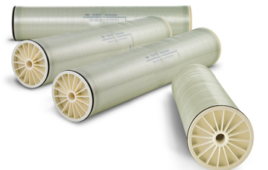Moqui
marbles, unusual balls of rock that can be found rolling around the
southwestern U.S. sandstone regions, were formed roughly 2 million years
ago with the help of microorganisms. This discovery by a University of
Nebraska-Lincoln research team has implications for finding life on Mars
and for better understanding Earth’s past.
The
research by Karrie Weber, assistant professor of geomicrobiology and
microbial biogeochemistry, and her colleagues is featured on the cover
of the August issue of Geology, the journal of the Geological Society of
America.
Moqui
marbles, which range in size from BBs to cannonballs, weather out of
sandstone and have a hard, round shell made of iron oxide, or rust, and a
soft, sandy interior. Previous theories of their formation had
suggested a chemical reaction devoid of life, but Weber’s team
discovered clear evidence that microorganisms played a role.
With
limited organic carbon or light to feed on, microorganisms instead used
siderite, a mineral containing iron carbonate, as an energy and carbon
source, a process that oxidized the iron and turned it into iron oxide.
It also produced acid, which dissolved the iron carbonate into iron and
carbonates that dispersed to the mineral’s exterior lining. The process
continued until a thick shell of iron oxide formed, leaving a bleached
sandy core containing little iron. Microorganisms further converted the
inorganic carbonates into organic carbon.
To
determine that microorganisms were involved, researchers looked for
telltale signs of life, principally nitrogen and organic carbon.
Compared to minerals, living beings usually contain a “lighter” isotope
of carbon, or one with fewer neutrons, and chemical analyses indicated
the presence of this lighter carbon. Looking at the material using a
field emission scanning electron microscope, they discovered structures
that resembled microorganisms. Nanoscale geochemical analyses conducted
by colleagues at the University of Western Australia provided a detailed
chemical composition of the structures that further indicate microbial
life.
“We
found iron oxide is associated with these organic carbon structures
that resemble microorganisms,” Weber said. “So all of the information
put together tells us that microbial life was present, active and played
a role in iron biomineralization.”
The
discovery demonstrates that life could persist in this type of rocky,
iron-rich environment. It provides a guide for searching for life
elsewhere on Earth, or even on Mars, the focus of much scientific
investigation, where similar structures have been found.
This
allows for a target that can be identified more easily than having to
search at the fine scale, such as looking for DNA, Weber said.
Weber
is collecting samples from environments in Colorado and Nebraska where
microorganisms are oxidizing iron and she will study that process in
more detail in the laboratory. She also is investigating similar
processes in which microorganisms are chemically changing the current
environment.
Weber’s
team included David Loope and Richard Kettler in UNL’s Department of
Earth and Atmospheric Sciences, research assistant Trisha Spanbauer, and
Matthew Kilburn and David Wacey at the University of Western Australia.
Biosignatures link microorganisms to iron mineralization in a paleoaquifer
University of Nebraska-Lincoln




